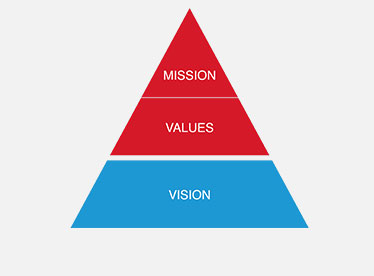-
Products
-
Transportation & Mobility Solutions
Transportation & Mobility Solutions
At Hitachi, we engineer industry-leading transportation and mobility solutions by leveraging decades of knowledge and using high-quality automotive material and components.
-
Energy Solutions
Energy Solutions
We believe the only solution for fulfilling the growing power requirements of industries and society is through a comprehensive portfolio of sustainable energy solutions and delivering innovative high-efficiency energy systems.
-
IT Infrastructure Services
IT Infrastructure Services
Hitachi’s state-of-the-art IT products and services are known to streamline business processes which result in better productivity and a higher return on investment (ROI).
-
Social Infrastructure: Industrial Products
Social Infrastructure: Industrial Products
Within the industrial sector, Hitachi is consistently delivering superior components and services, including industrial and automation solutions, useful in manufacturing facilities.
-
Healthcare & Life Sciences
Healthcare & Life Sciences
At Hitachi, we believe that healthcare innovation is crucial to a society’s advancement. A strong healthcare sector is often considered an inseparable element of a developed society.
-
Scientific Research & Laboratory Equipments
Scientific Research & Laboratory Equipments
Hitachi focuses on extensive research and development, transformative technology, and systems innovation to unfold new possibilities and create new value through scientific endeavors that strengthen the connection between science and social progress.
-
Smart Audio Visual Products
Smart Audio Visual Products
Since 1956, Hitachi audio visual products have provided state of the art solutions to consumers all over the world. It has been our pleasure to design competitive products at the lowest possible prices while maintaining our industry-leading quality standards for your comfort and enjoyment.
-
View All Products
Hitachi Products & Solutions
Hitachi, a technology leader in the U.S., offers a diverse set of products and solutions, and breakthrough technologies for smart manufacturing, green energy and mobility solutions that empower governments, businesses, and communities.
-
Transportation & Mobility Solutions
- Social Innovation Solutions
-
About Us
-
Hitachi in the U.S.A.
Hitachi in the U.S.A.
Discover information about the Hitachi group network across the Americas, upcoming events and sustainability endeavours, CSR policies, and corporate government relations.
-
About Hitachi Group
About Hitachi Group
Explore our leadership team, investor relations, environmental vision, and sustainability goals. Learn how Hitachi is leveraging its research & development capabilities for social innovation across industry verticals.
-
Hitachi in the U.S.A.
- News Releases
- Case Studies
- Careers
- R&D
Hitachi to Supply Proton Beam Therapy System to the University of Texas M. D. Anderson Cancer Center
HOUSTON, Texas, May 7, 2003 – Hitachi America, Ltd. today announced that Hitachi, Ltd. (NYSE: HIT) is supplying a proton beam therapy system for the treatment of certain types of cancers to The University of Texas M. D. Anderson Cancer Center in Houston, Texas. Terms of the transaction were not disclosed.
The University of Texas M. D. Anderson Cancer Center (MDACC), in partnership with Sanders Morris Harris Inc., a Texas-based investment banking firm, and The Styles Company, a developer and manager of hospitals and healthcare facilities, is building a proton therapy facility near the MDACC main complex at the Texas Medical Center in Houston, Texas USA. The first patient treatments are expected in early 2006. Hitachi, Ltd., Japan, and its subsidiary Hitachi America, Ltd., will supply the major equipment (accelerator, beam lines, gantries, nozzles and treatment couches) for the facility.
In making the announcement, Masaharu Sumikawa, senior vice president and director, Hitachi, Ltd., said, “We are very enthusiastic about the opportunity to bring proven Hitachi technology to this great medical center for the benefit of society, and in particular, to help in the fight against cancer. We developed the Hitachi proton beam therapy system in 1998 and the first unit has been in successful use at the University of Tsukuba, in Japan, since September 2001. Our mission at Hitachi is to be a “Best Solutions Partner”. In this project we are not only a clinical partner by supplying equipment but also a business partner. It is our determination and goal to fulfill project requirements bringing all possible corporate resources to bear on this project.”
The MDACC Proton Therapy Center will be a freestanding, investor-owned radiation oncology center offering state-of-the-art proton beam therapy. The facility will have four treatment rooms: three rooms will have rotating, isocentric gantries and the fourth treatment room will have capabilities for both large and small field (e.g. ocular melanoma) treatments using horizontal beam lines. There will be an additional horizontal beam room dedicated to physics research and development, radiation biology research, and outside users who wish to conduct experiments using proton beams.
The first two gantries will each be initially equipped with a passive scattering nozzle while the third gantry will have a magnetically swept pencil beam scanning nozzle. The latter will include enhancements to the treatment control system that will allow for the delivery of proton intensity modulation treatments. The proton accelerator will be a 250 MeV zero-gradient synchrotron with a slow extraction system. The facility is expected to open for patient treatments in early 2006. M. D. Anderson Cancer Center anticipates that the facility will be capable of treating about 3,400 patients per year.
Hitachi is a pioneer in Proton Beam Therapy technology. Hitachi developed its own proton beam therapy system in 1998 and has already supplied a system to the University of Tsukuba, in Japan. Since it began treating patients in September 2001, the system has quickly gained recognition for its high level of accuracy and reliability.
Proton Beam Therapy is a new type of cancer treatment. It is a localized form of radiation therapy, in which a proton beam is directed solely at a tumor lying deep within the body in order to destroy the tumor. When a proton beam is used to treat a tumor, the side effects are minimal compared with those of a conventional electron beam and X-ray radiation therapy. This is because the proton beam has little effect on the surrounding healthy tissue and only the cancerous cells are treated. Compared with surgical treatment and chemotherapy, the strain on the patient is reduced.
Proton beam therapy is drawing attention worldwide as a promising application for the treatment of a variety of difficult-to-treat diseases. In the United States, proton therapy is routinely covered and paid for by Medicare and other medical insurance plans. It also appears likely that it will be accepted for insurance coverage in Europe and Japan in the near future.
Hitachi’s sales in the Bio-Medical field in 2002 were $1.7 billion. The entire Hitachi group has placed the Bio-Medical field as one of the company’s strategic business cores for the future. The business focuses on diagnostic and therapeutic systems that employ cutting-edge technologies, such as Positron Emission Tomography (PET) cancer diagnosis and proton beam cancer therapy system. The Hitachi Group is also bringing into the global market equipment and related services in applied medical biotechnology, such as intelligent operating rooms, robot-assisted surgery, DNA sequencers and advances in tissue engineering.
Hitachi America, Ltd., a subsidiary of Hitachi, Ltd., markets and manufactures a broad range of electronics, computer systems and products, and consumer electronics, and provides industrial equipment and services throughout North America. For more information, visit http://www.hitachi.us/.
Hitachi, Ltd. (NYSE: HIT), headquartered in Tokyo, Japan, is a leading global electronics company, with approximately 320,000 employees worldwide. Fiscal 2001 (ended March 31, 2002) consolidated sales totaled 7,994 billion yen ($60.1 billion). The company offers a wide range of systems, products and services in market sectors, including information systems, electronic devices, power and industrial systems, consumer products, materials and financial services. For more information on Hitachi, please visit the company's Web site at http://hitachi.com.






